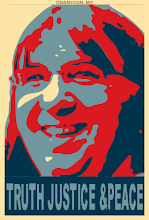Can't Be Topped
I was definitely a child of the 60's. (Of course, some would say that I still am. My brother calls me a "dead hippie" because he says I've never given up my liberal views.)
I talked the talk, walked the walk -- and dressed appropriately. I was for love, peace and understanding. I marched against the war. And I wore flowers in my hair.
And the music was part of my life. I was not so much into hard or acid rock. My favorites were James Taylor, Simon & Garfunkel, Carly Simon, Joni Mitchell and Carole King. And then there was Motown and TSOP (The Sound of Philadelphia). Marvin Gaye, Stevie Wonder, Harold Melvin & the Blue Notes. The Temptations, the Supremes, the Spinners, the Delfonics and, of course, the Four Tops. Songs that still fill my iPod today.
One of the great Motown crooners, Levi Stubbs, died yesterday. Four Tops Frontman Levi Stubbs Dies:
Four Tops frontman Levi Stubbs, whose dynamic and emotive voice drove such Motown classics as "Reach Out (I'll Be There)" and "Baby I Need Your Loving," died Friday at 72.
He had been ill recently and died in his sleep at the Detroit house he shared with his wife of 48 years, said Dana Meah, the wife of a grandson. The Wayne County medical examiner's office also confirmed the death.
With Stubbs in the lead, the Four Tops sold millions of records and performed for more than four decades without a change in personnel.* * * *Their biggest hits were recorded between 1964 and 1967 with the in-house songwriting and production team of Brian Holland, Lamont Dozier and Eddie Holland. Both 1965's "I Can't Help Myself (Sugar Pie, Honey Bunch)" and 1966's "Reach Out" went to No. 1 on the Billboard pop chart.
Other hits included "Shake Me, Wake Me" (1966), "Bernadette" and "Standing in the Shadows of Love" (both 1967).
It's hard to know for sure, memories being what they are, but I wouldn't be surprised if Motown was my first interaction (such as it was) with blacks. At the time I grew up, my hometown of Scranton had a population of about 125,000 (vs. 75,000 today). However, there were probably only about 1,000 blacks (and most likely little or no other minorities).
The neighborhoods were divided by ethnic background and the reality was, there was not much mingling even among the Irish, Italian, German and other ethnic groups. In fact, it is often said that Sunday morning is the most segregated time in America. That was certainly true in Scranton, but not just with respect to race. My neighborhood, for example, was mostly Catholic, but each ethnic group had its own Church. I can recall the Irish Church, the Italian Church and even the Lithuanian Church (where I went to grade school) within a few blocks of my home. There were also the Protestant Churches, such as the Clinton family Church that was up the street from my house. In fact, during the primary, Jason Jones of the Daily Show satirized the pastor at the Clinton's Church as racist because there were no blacks who attended the Church.
The black population in Scranton was largely found on the outskirts of the downtown area. And even though I attended one of the two public high schools in town, there were probably no more than 1/2 dozen blacks in my entire high school (that may have had as many as 1,500 students at the time). My high school, Central, was considered the "college prep" school, and (not so) subtle segregation encouraged the black students to attend Scranton Tech.
So, I not only owe singers like Levi Stubbs for the best music of my generation, but for introducing my to another culture in the best positive way possible. After all, anyone who could sing with such soul was alright with me.

No comments:
Post a Comment